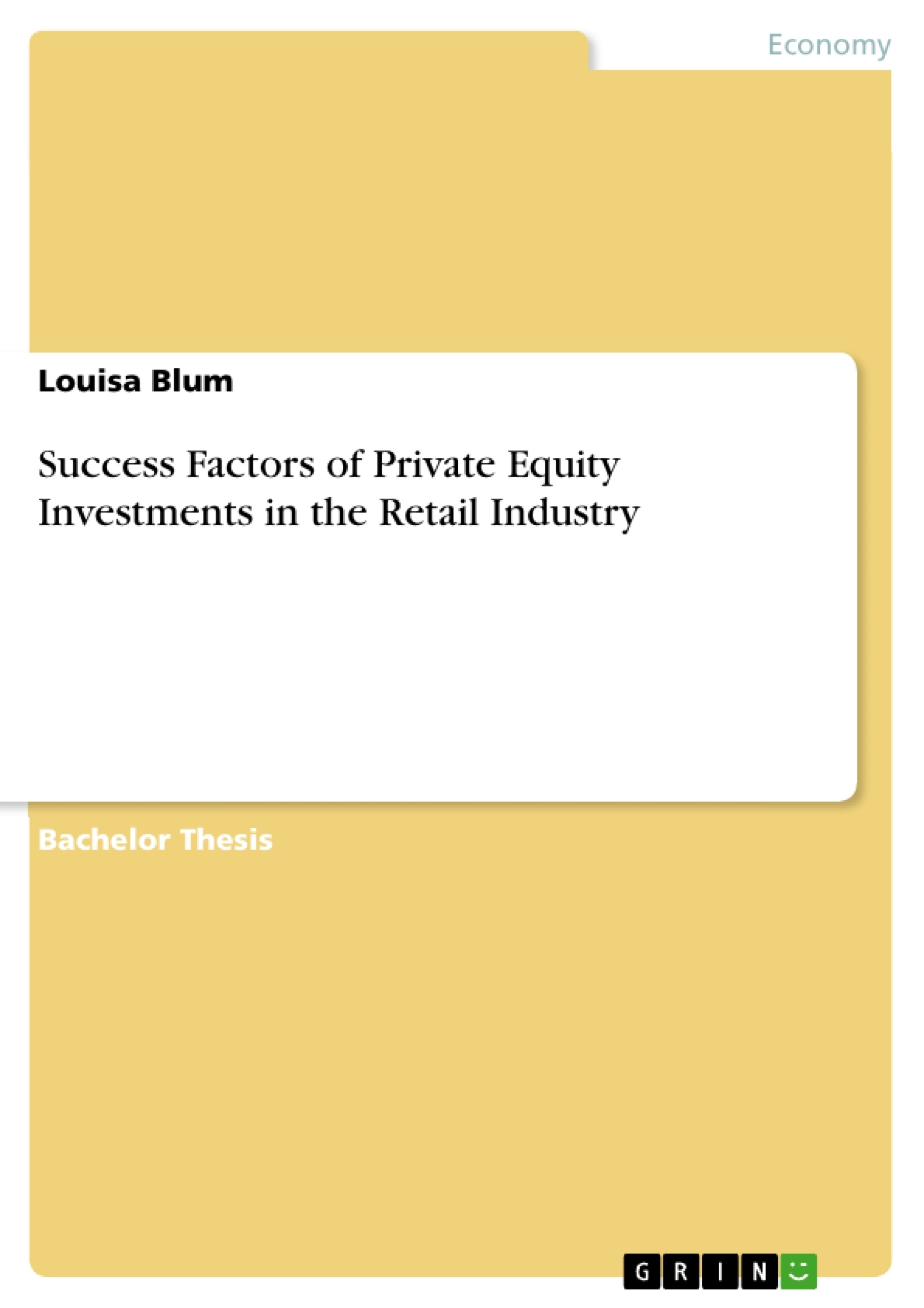This thesis examines the relationship between private equity firm and fund level characteristics and the performance of leveraged buyouts in the retail sector. More specifically, the three dimensions general partner experience, fund size, and the fund’s retail specialization are analyzed.
The impact of the three characteristics on the investment performance proxied by money multiples and internal rates of return, as well as by the write-off probability of the buyout, is assessed by analyzing a sample of 10,376 buyouts conducted since 1993, of which 614 deals are transactions in the retail sector.
According to Bloomberg News, the year of 2017 was known as the "Retail Apocalypse" with more U.S. retailers filing for bankruptcy than during the year of the financial crisis. By taking a closer look at the reasons for these defaults, one will quickly understand that the culprit might not solely be Amazon Inc. tapping on market share. Before their bankruptcies, numerous retail companies were bought and highly levered by private equity firms who neither were able to implement adequate operational improvements, nor product and sales innovations.
The resulting collapses like the one of toy giant Toys"R"Us in September 2017, twelve years after its leveraged buyout by the mega funds of Bain Capital and KKR, lead to numerous store closings and job losses. Hence, there is certainly a need to understand the factors determining the success of private equity investments in the retail industry. This thesis aspires to establish a causal relationship between macroeconomic, firm, and fund level characteristics and buyout performance in the retail sector.
Inhaltsverzeichnis (Table of Contents)
- Abstract
- Table of Contents
- List of Exhibits
- List of Tables
- List of Abbreviations
- Introduction
- Characteristics of Retail Private Equity
- Determinants of the Industry Environment
- Private Equity Value Creation in Retail
- Literature Review and Development of Hypotheses
- General Partner Experience
- Private Equity Fund Size
- Retail Industry Specialization
- Data and Methodology
- Data Compilation and Restrictions Applied
- Data Quality
- Descriptive Statistics
- Methodology
- Variables
- Dependent Variables
- Independent Variables
- Control Variables
- Fixed Effects
- Empirical Results
- Performed Regressions
- Tests of Model Specifications
- Review of Hypotheses
- Discussion of Limitations and Scope for Future Research
- Conclusion
- References
- Appendix
Zielsetzung und Themenschwerpunkte (Objectives and Key Themes)
This thesis aims to investigate the link between characteristics of private equity firms and funds and the performance of leveraged buyouts in the retail industry. The study focuses specifically on general partner experience, fund size, and retail specialization, and their impact on investment performance, as measured by money multiples, internal rates of return, and write-off probabilities.
- Impact of private equity firm and fund characteristics on leveraged buyout performance in retail
- The role of general partner experience in private equity investment success
- Influence of fund size on retail investment returns and write-off probabilities
- Benefits and drawbacks of retail industry specialization for private equity funds
- Analysis of a large dataset of leveraged buyouts, including retail deals, to draw empirical conclusions
Zusammenfassung der Kapitel (Chapter Summaries)
- Introduction: Provides an overview of the research topic, outlining the importance of private equity investments in retail and the key questions addressed in the thesis.
- Characteristics of Retail Private Equity: Introduces the characteristics of the retail industry that impact private equity investments, highlighting the unique challenges and opportunities.
- Literature Review and Development of Hypotheses: Reviews existing research on private equity performance, focusing on the impact of general partner experience, fund size, and industry specialization. Based on this review, the study develops specific hypotheses.
- Data and Methodology: Describes the data used in the analysis, including the data source, sample size, and variables. Outlines the research methodology, including regression analysis and statistical tests.
- Empirical Results: Presents the findings of the empirical analysis, examining the relationship between private equity characteristics and investment performance.
Schlüsselwörter (Keywords)
This study focuses on private equity investments in the retail industry, analyzing the relationship between fund and firm characteristics and investment performance. Key concepts include leveraged buyouts, money multiples, internal rates of return, write-off probabilities, general partner experience, fund size, retail specialization, and empirical analysis.
- Quote paper
- Louisa Blum (Author), 2020, Success Factors of Private Equity Investments in the Retail Industry, Munich, GRIN Verlag, https://www.grin.com/document/1301650



